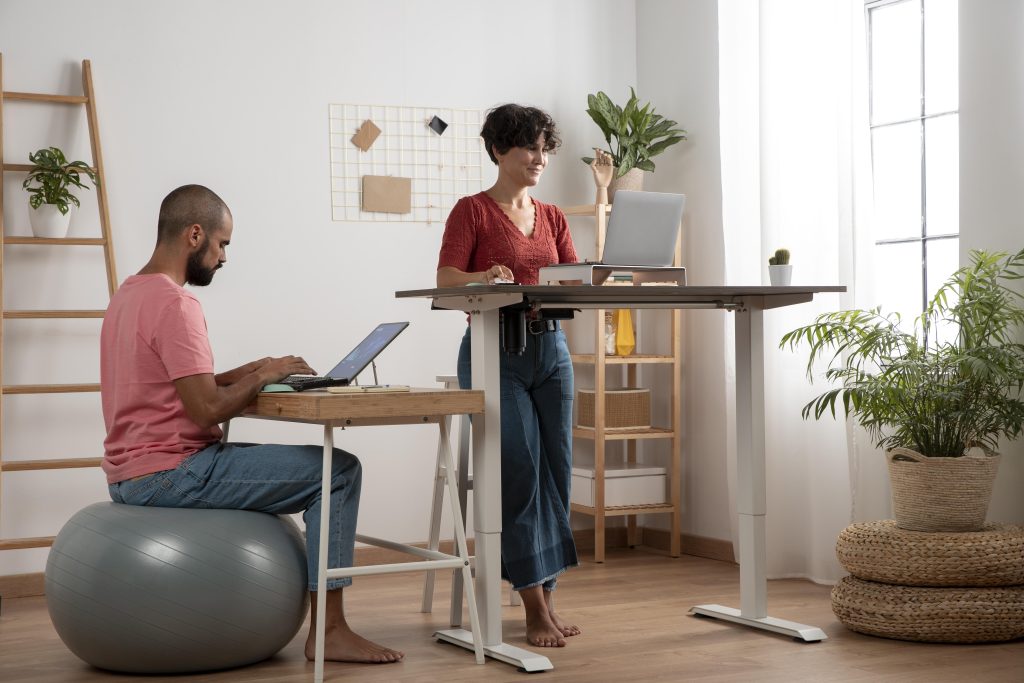Sculpting Spaces for Success: The Art of Balancing Ergonomics and Human-Centric Aesthetics

Creating environments that seamlessly blend ergonomics and human-centric aesthetics is no longer a luxury but a necessity. In an ever-evolving world, where productivity and well-being are paramount, the design of our workspaces plays a pivotal role in our success.[1] This article explores the synergy between these two crucial aspects and how they can contribute to productivity and overall satisfaction in your workspace.
Ergonomics is not just about comfortable chairs and adjustable desks. It involves a holistic approach to workspace design that takes into account factors such as lighting, posture, and the arrangement of furniture and equipment.[2] Proper ergonomics can:
- Reduce Physical Discomfort: Ergonomic furniture and accessories ensure that employees are less likely to experience discomfort or strain, leading to higher job satisfaction.
- Enhance Productivity: When employees are physically comfortable, they can focus better on their tasks, resulting in increased productivity.
- Prevent Injuries: Proper ergonomics can prevent common workplace injuries, such as carpal tunnel syndrome and back pain.[3]
Human-Centric Aesthetics: The Art of Visual Appeal
While ergonomics addresses the physical aspects of workspace design, human-centric aesthetics focuses on the visual and emotional appeal of a space. A well-designed workspace should not only be comfortable but also inspire creativity and positivity.[4]
Achieving the Balance
Balancing ergonomics and human-centric aesthetics may seem challenging, but it’s essential for creating a workspace that fosters both comfort and creativity. Here are some strategies to achieve this equilibrium:
- Natural Lighting: Incorporating ample natural light not only enhances the visual appeal of a workspace but also promotes well-being and reduces eye strain, in line with ergonomic principles.
- Flexible Furniture: Invest in furniture that is both ergonomic and visually pleasing. Adjustable chairs and standing desks are excellent examples of ergonomic choices that also contribute to aesthetics.
- Colors and Decor: Choose colors and decor that evoke positive emotions and creativity, aligning with both ergonomics and visual appeal. Soft blues and greens can create a calming atmosphere, while vibrant colors can stimulate energy and enthusiasm.
- Office Ergonomics Self-Assessment and Adjustment Tool (central office and home office): This app collects employee data, including demographics, health, and workspace details, for assessing workspace risks, offering real-time ergonomic advice, recommending equipment or space changes, and generating documentation and orders when needed.
Case Studies in Successful Workspace Design
Several companies have mastered blending ergonomics and human-centric aesthetics in their workspaces. Companies like Google, Apple, and Airbnb are known for their innovative and visually appealing office spaces that prioritize employee comfort and creativity.[5]
Creating a workspace that successfully balances ergonomics and human-centric aesthetics is key to achieving success and satisfaction.[6] By focusing on both physical comfort and visual appeal, you can create an environment that fosters productivity, creativity, and employee well-being. As the world evolves, so too should our approach to workspace design, ensuring that it continues to promote success in a holistic and sustainable way.
